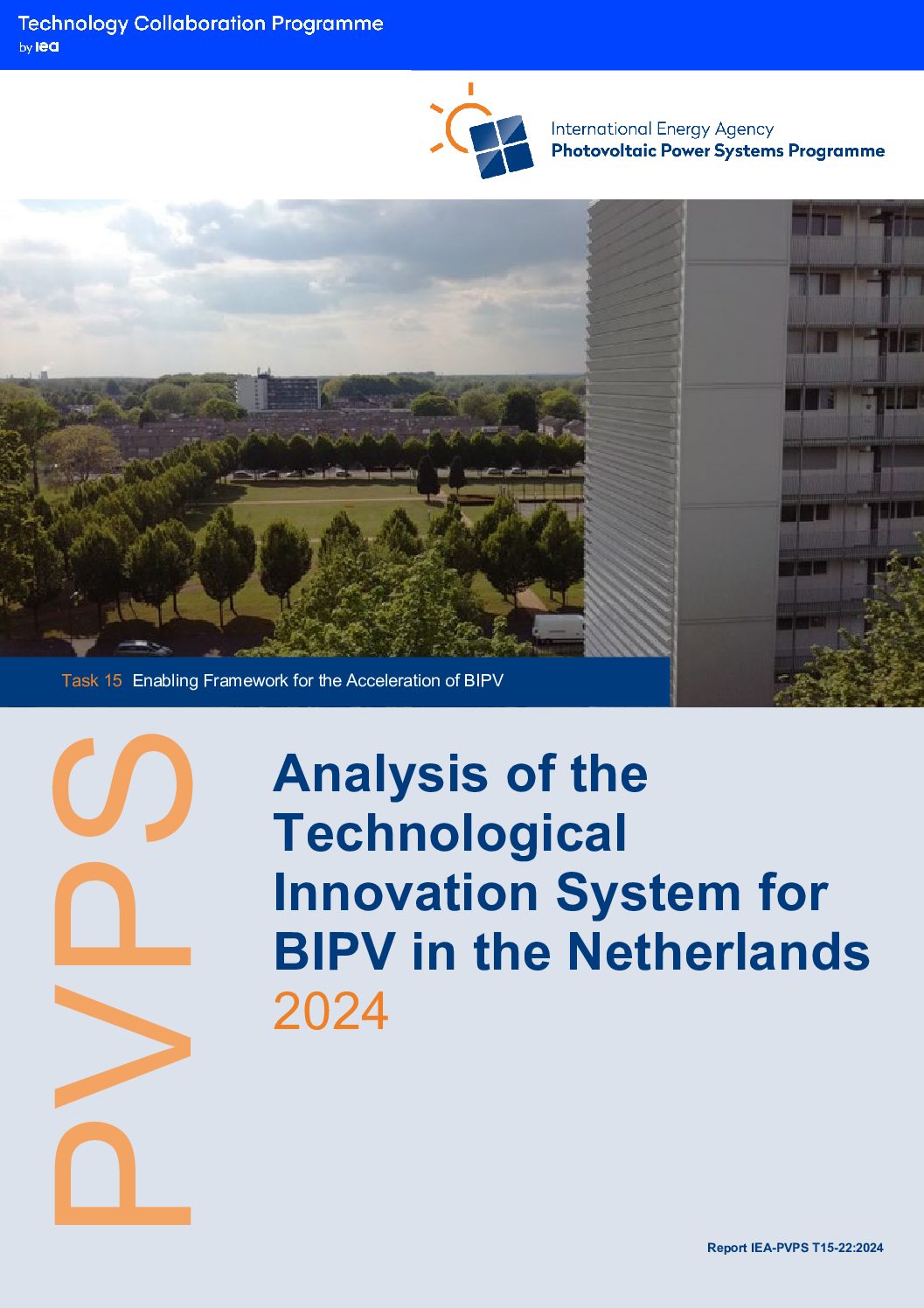This report provides an in-depth exploration of the unique dynamics that set BIPV apart within the broader solar energy innovation landscape. The analysis highlights several key insights:
Distinct Dynamics: BIPV technology, while part of the broader solar energy system, involves specialized players and unique characteristics. It also considers the regional focus of the construction sector compared to the international solar sector.
National Drivers: The dense population in the Netherlands drives the need for multifunctional solar applications, integrating PV into buildings, infrastructure, landscapes, and water surfaces. Policymakers recognize BIPV’s potential for innovation and climate goals, but broader market adoption will require investment, standardization, education, and demand.
Historical Context: Early BIPV pioneers worked closely with governments to navigate the construction sector’s dynamics. Although there were high hopes for cost-effective thin-film solar technologies, significant cost reductions were not realized until thinner crystalline panels emerged. As a result, BIPV still primarily serves a high-end market.
The report also emphasizes the importance of bridging the gap between the solar and construction sectors. This involves focusing on innovative business cases, training, and adherence to standards to enable BIPV to expand beyond its niche market.
Key Takeaways:
- The market for Building-Integrated Photovoltaics (BIPV) in the Netherlands remains a B2B niche market, despite persistent efforts by both large multinationals and SMEs over the past twenty years to scale it up.
- According to the TIS framework, the development of BIPV in the Netherlands shows strength in knowledge development but weaknesses in market formation, knowledge diffusion, social capital, and resources.
- Recommendations include networking with local governments, identifying new markets that address societal needs, bringing together stakeholders along the value chain, undertaking large-scale demonstration projects, industrializing the building process using digital tools and prefabricated materials, and addressing certification and building codes.
